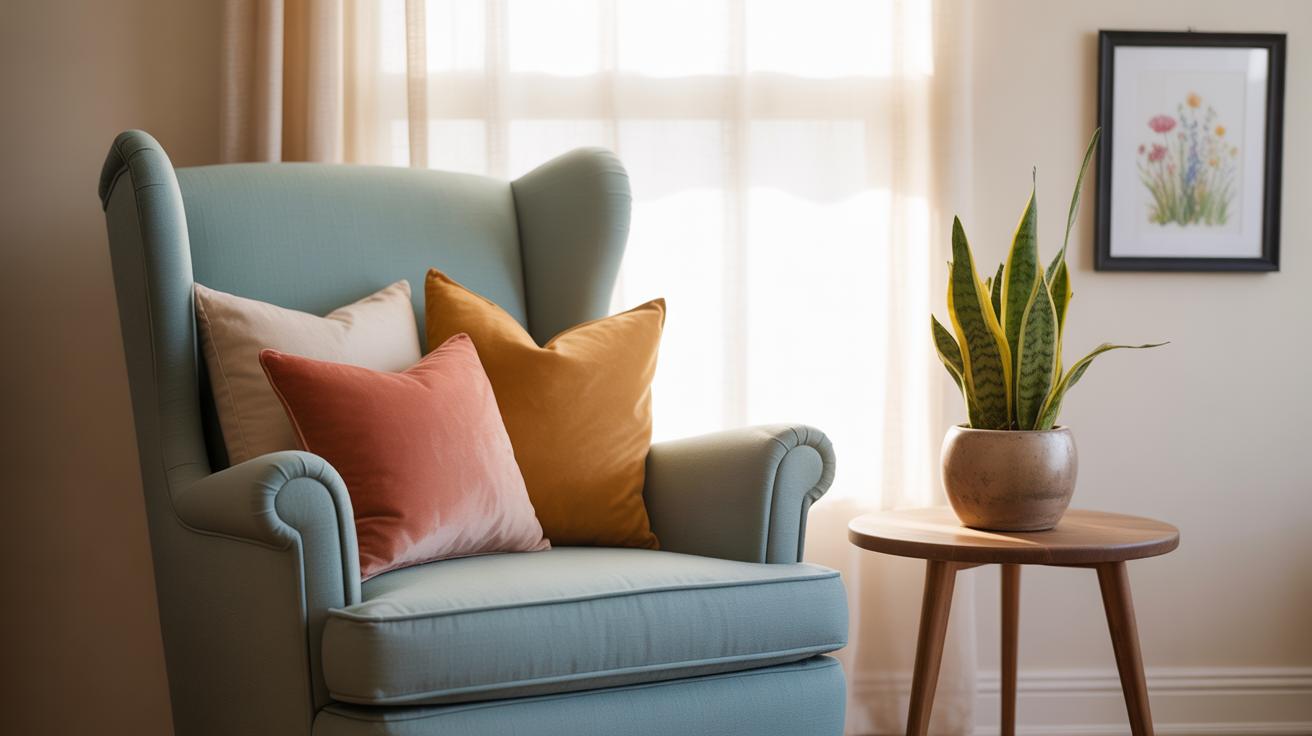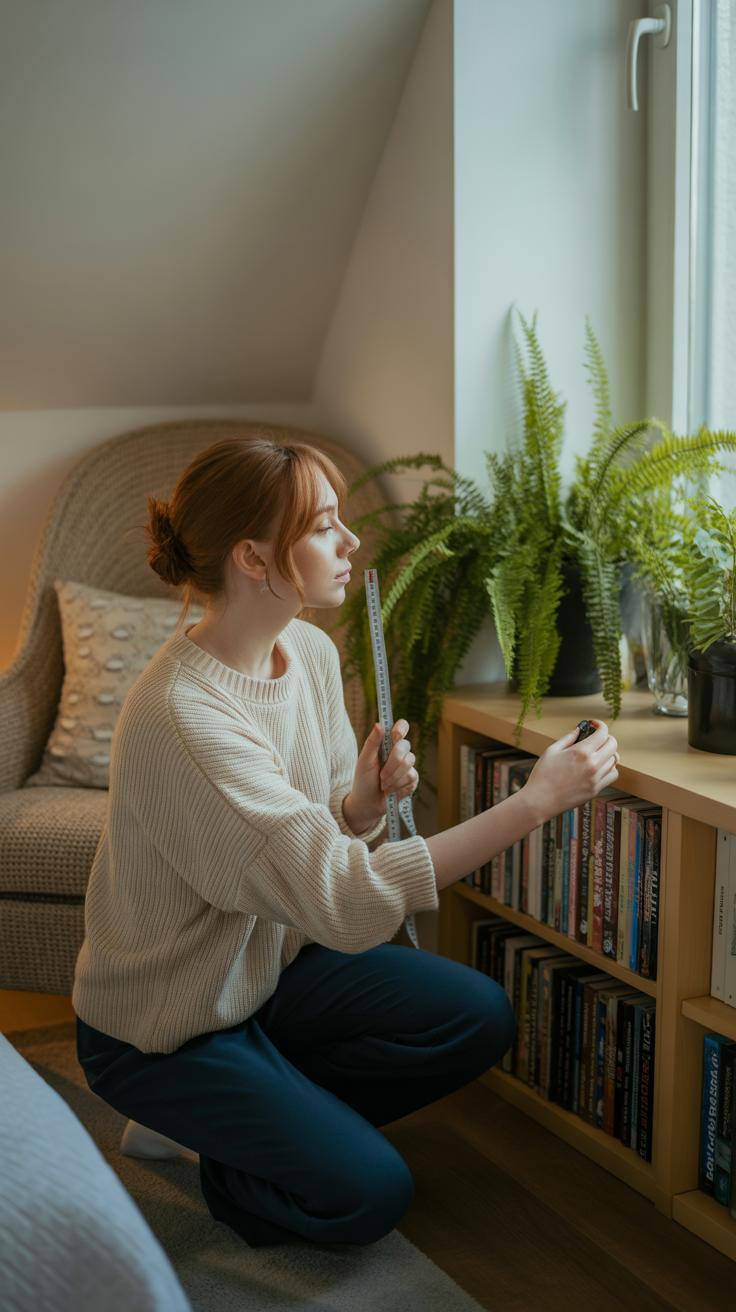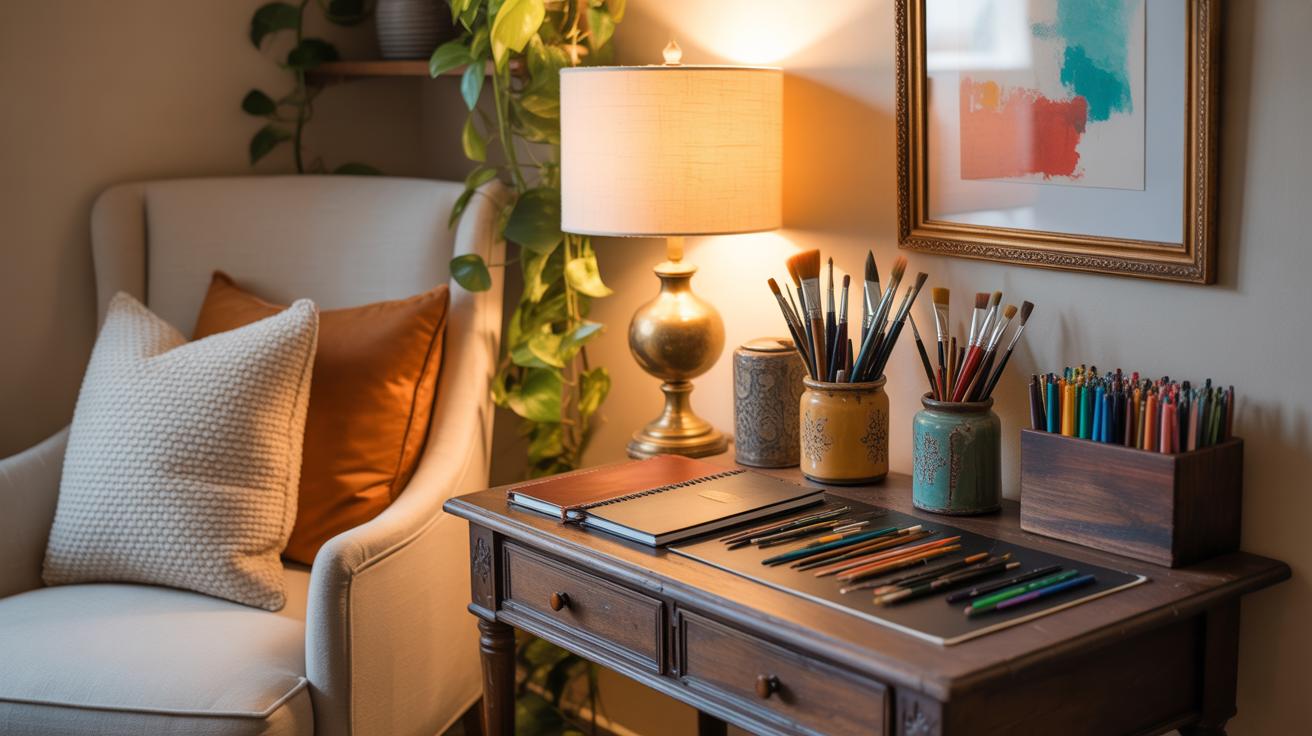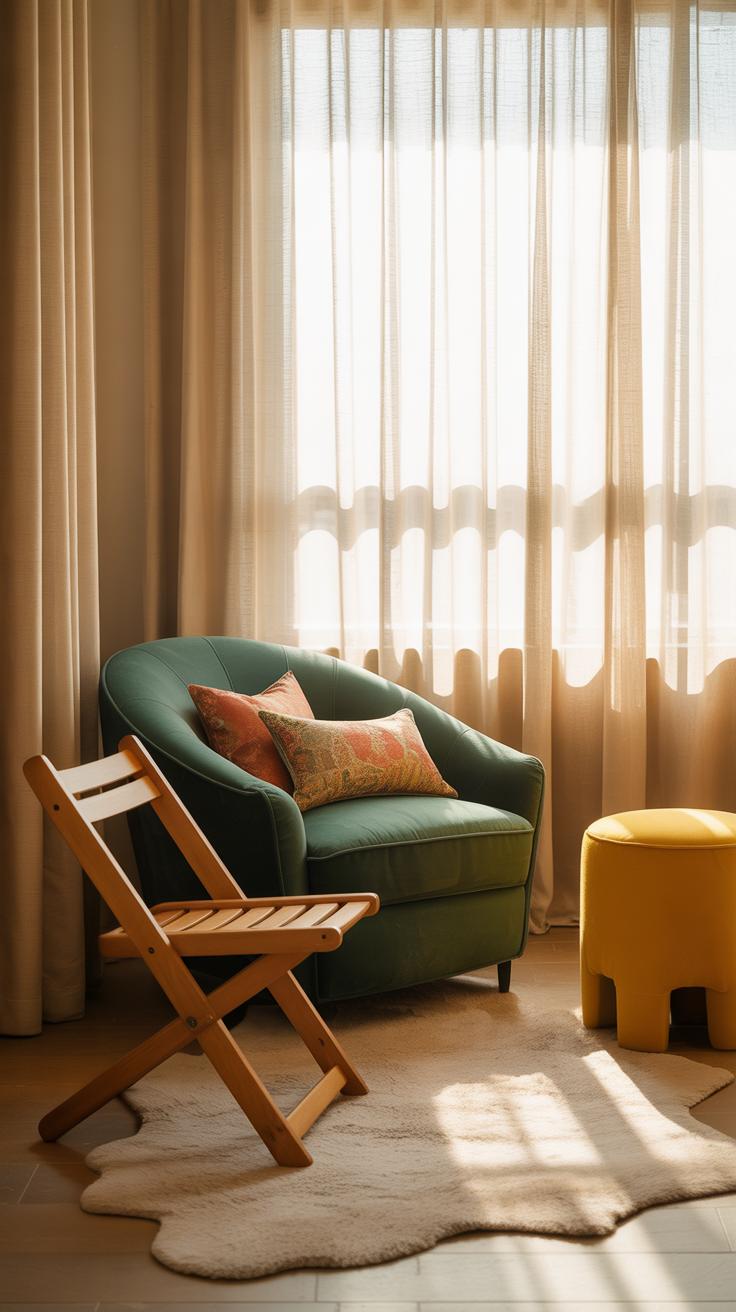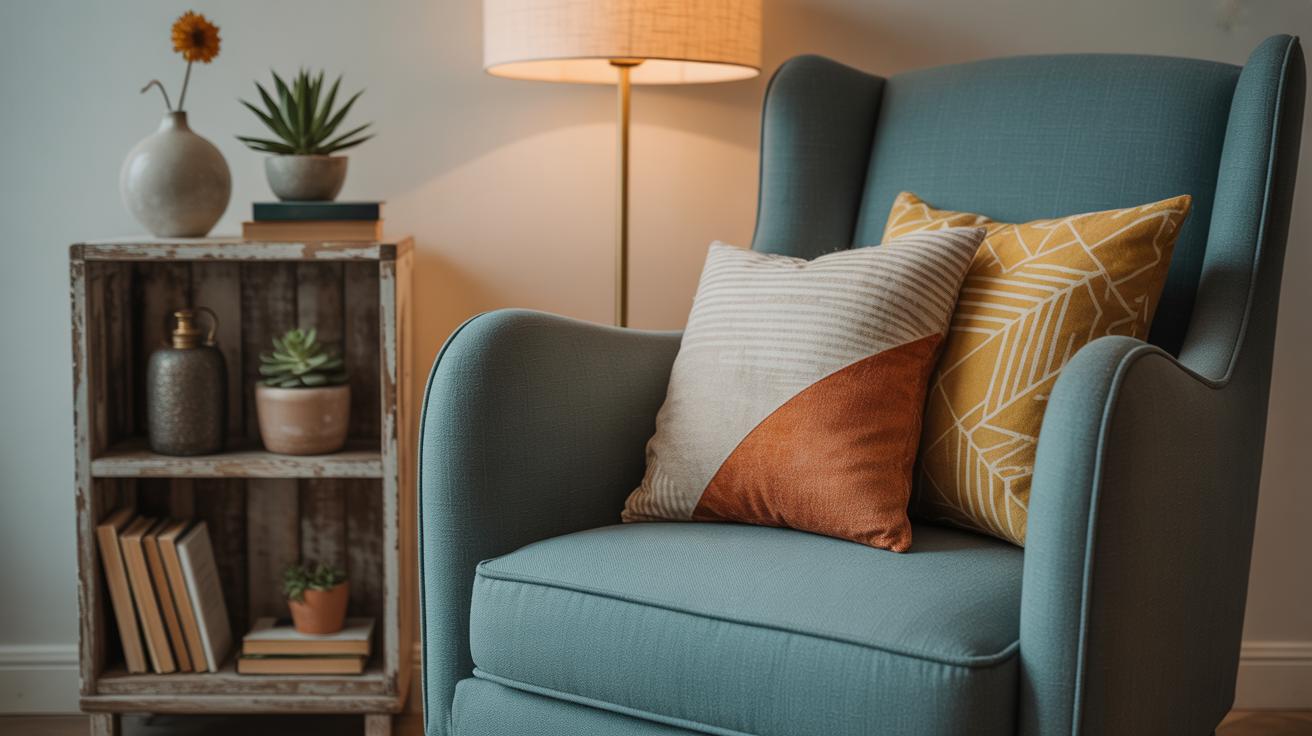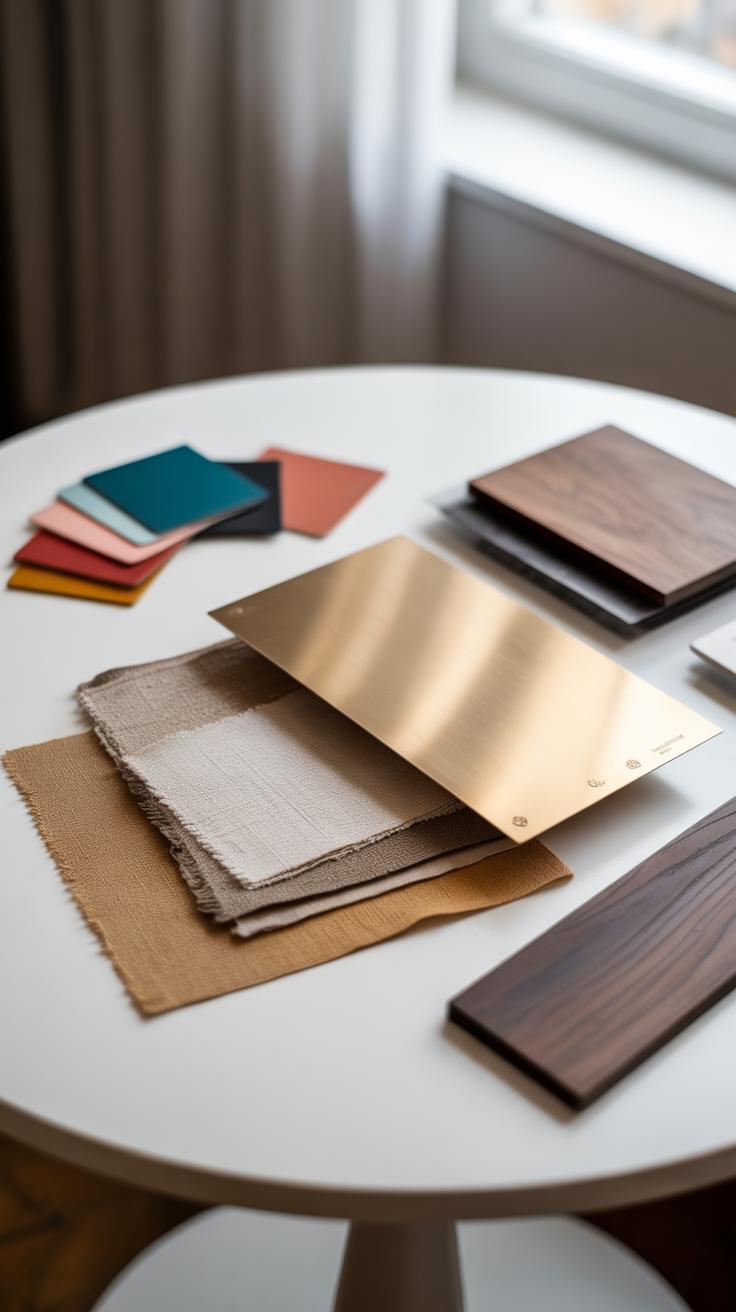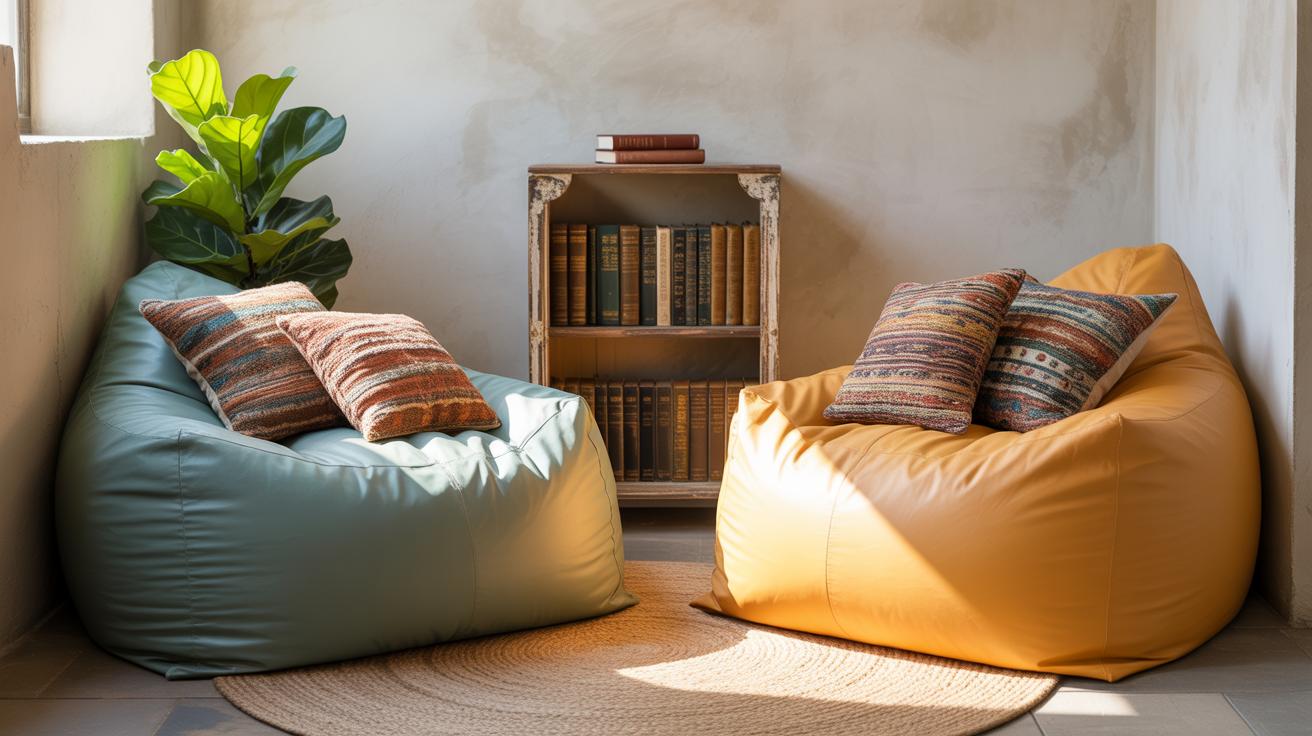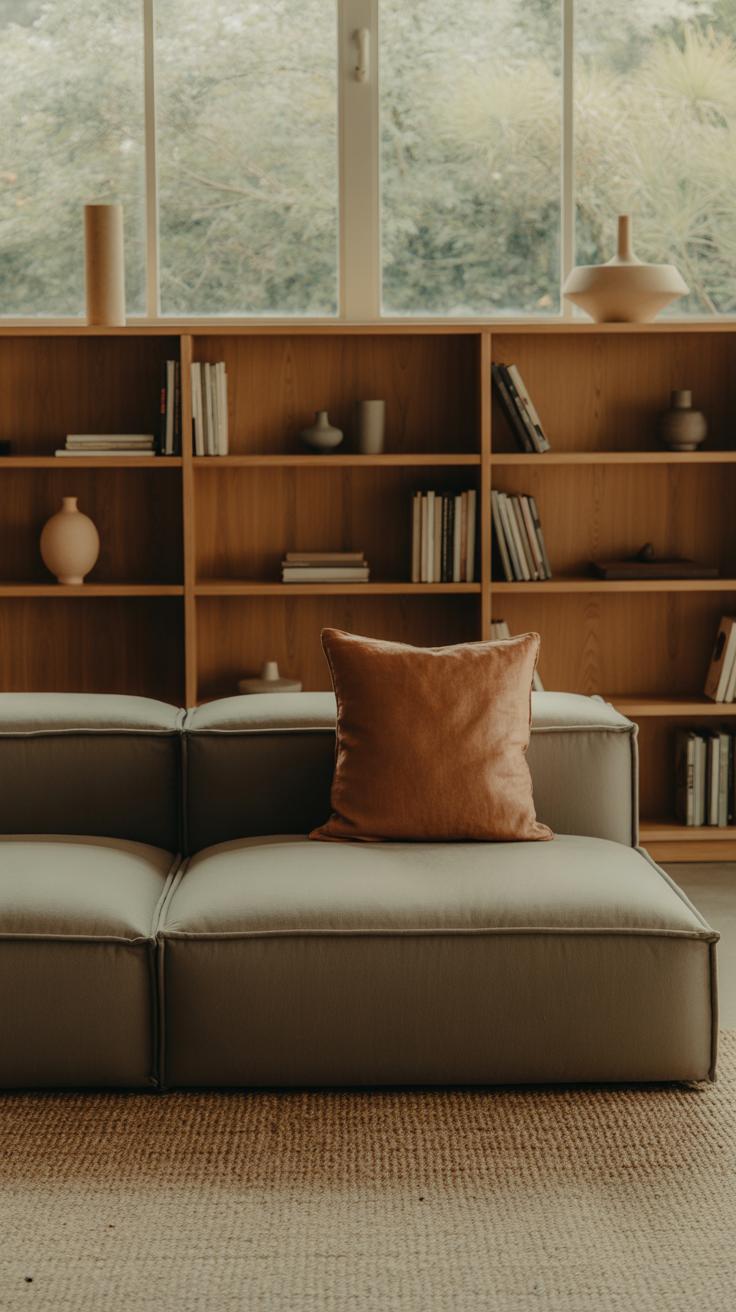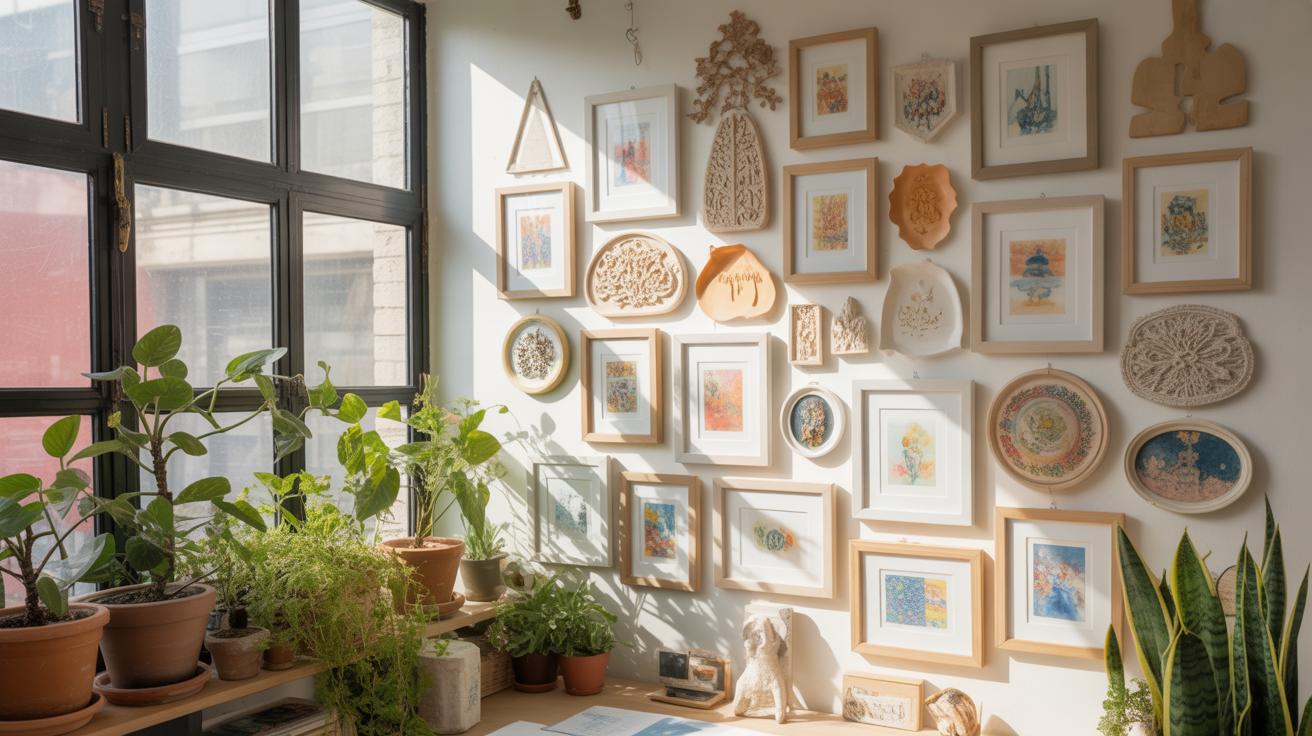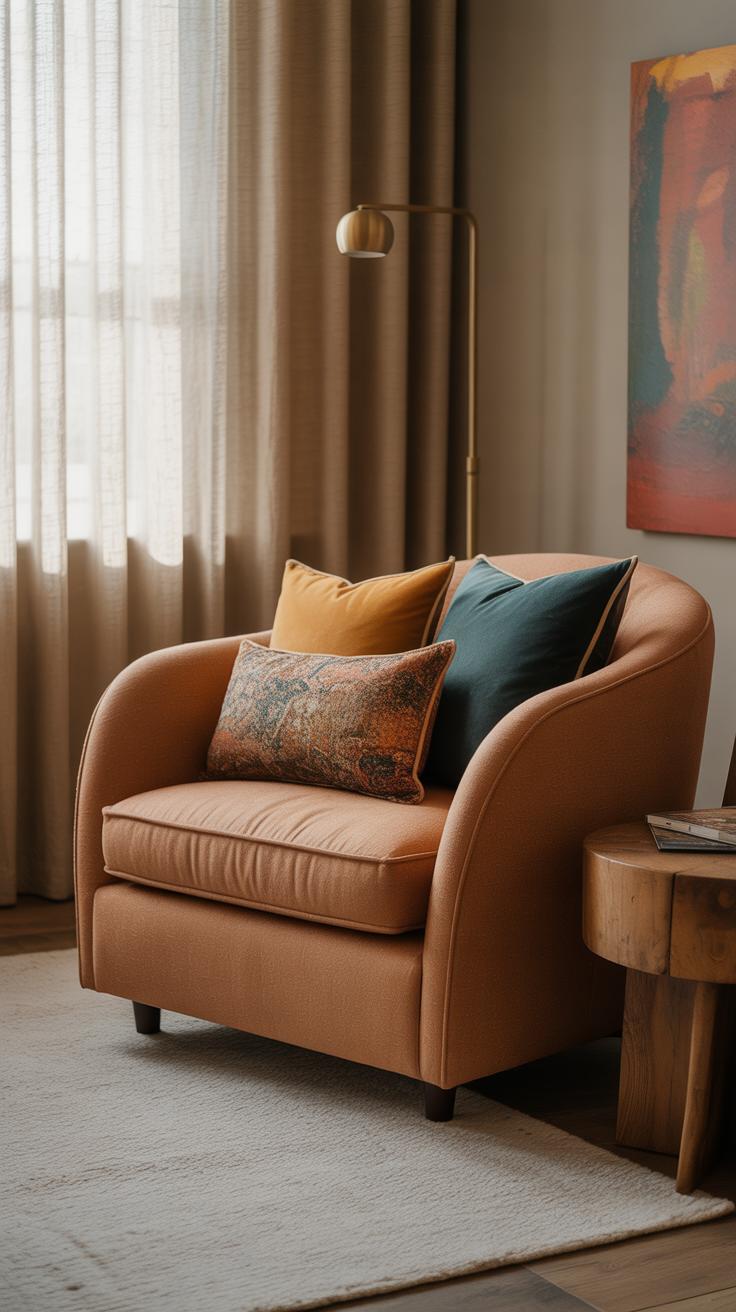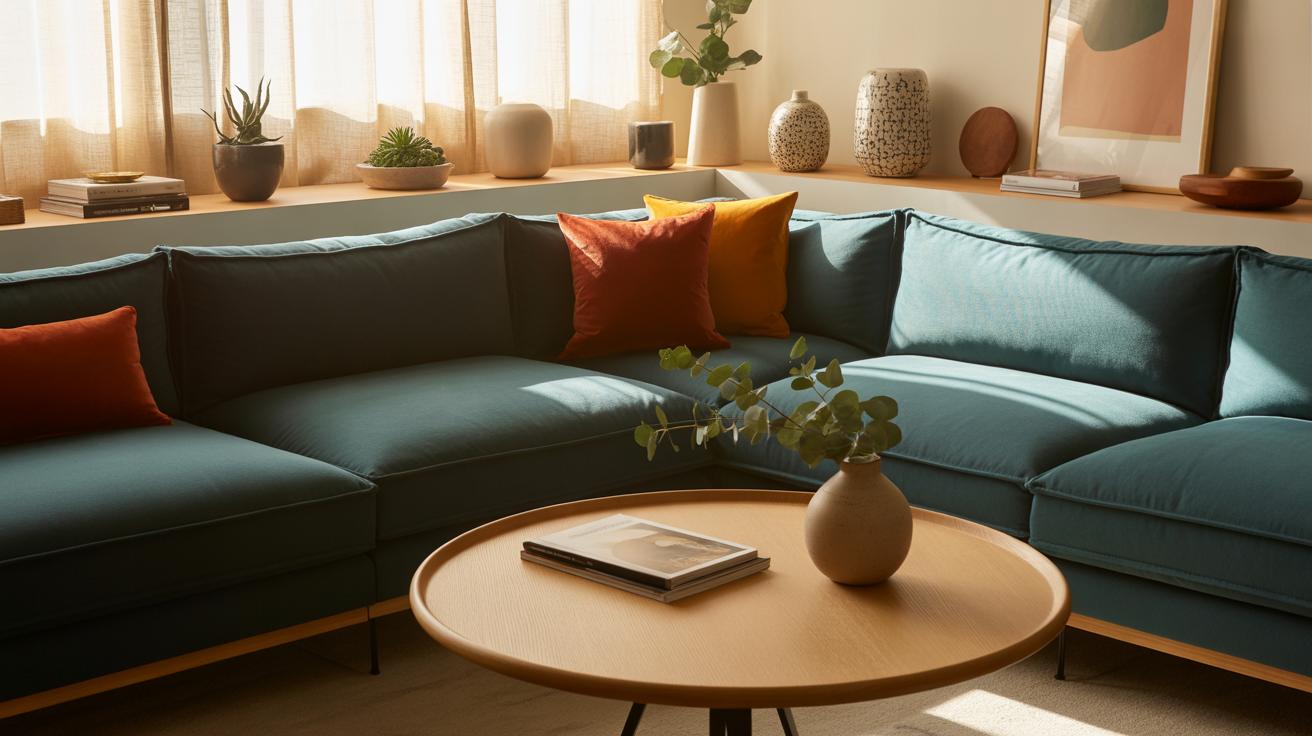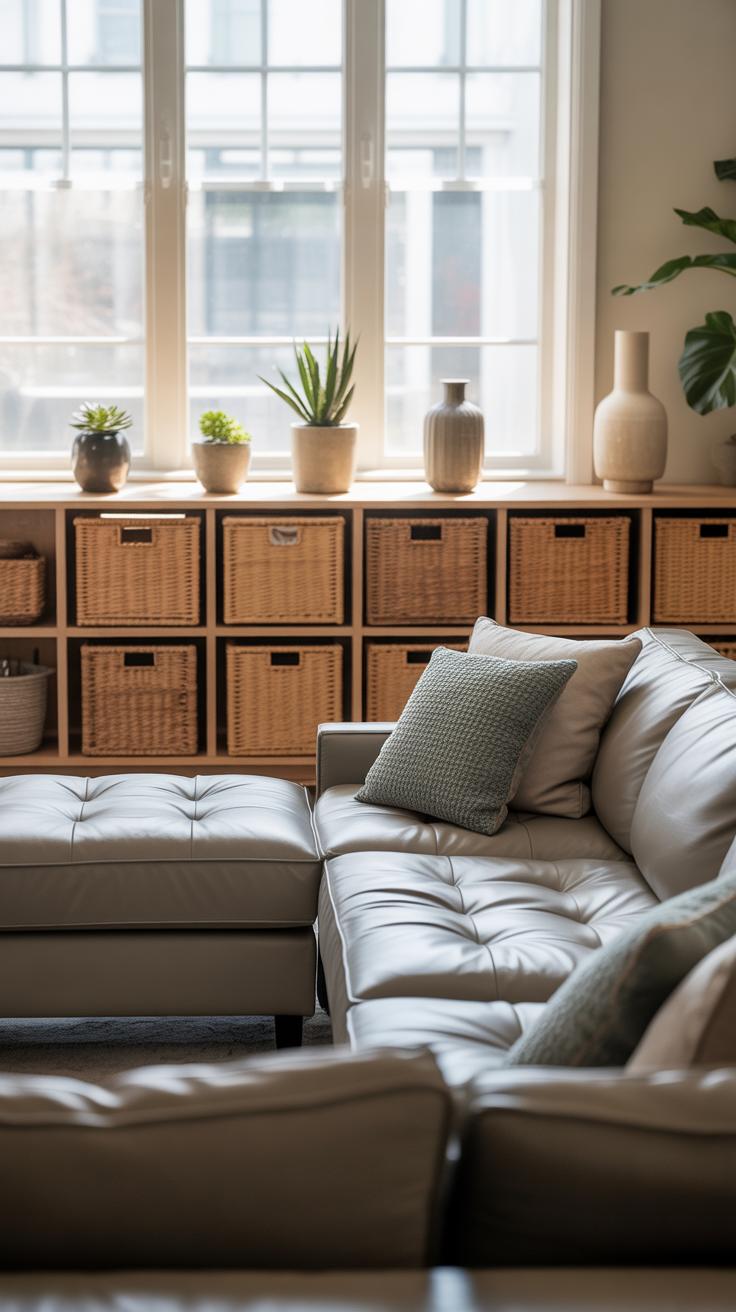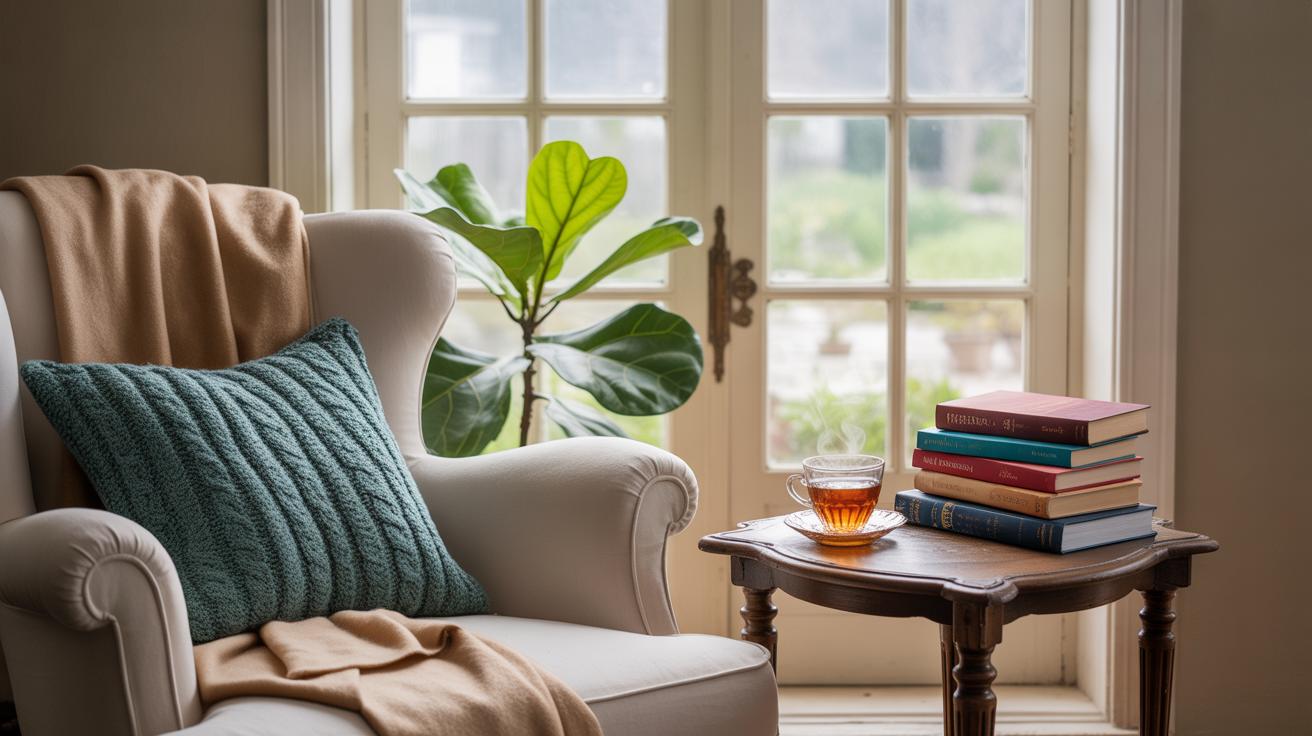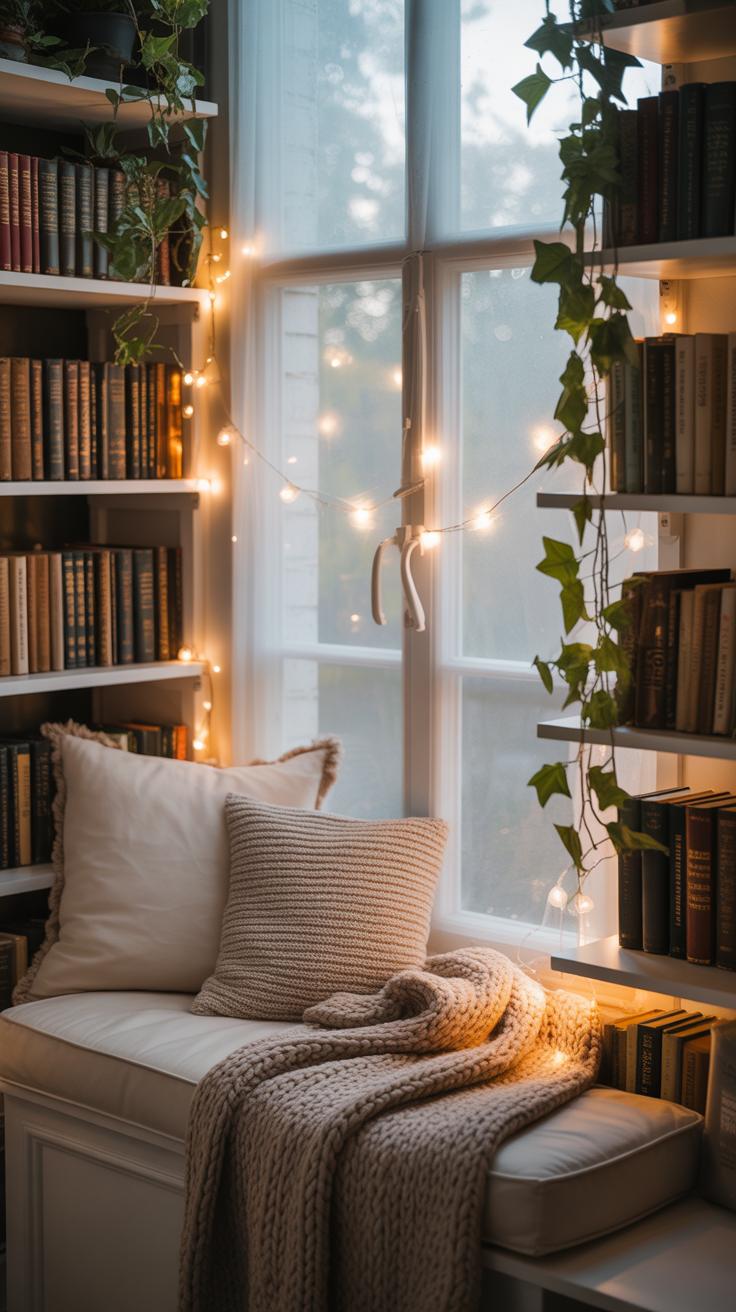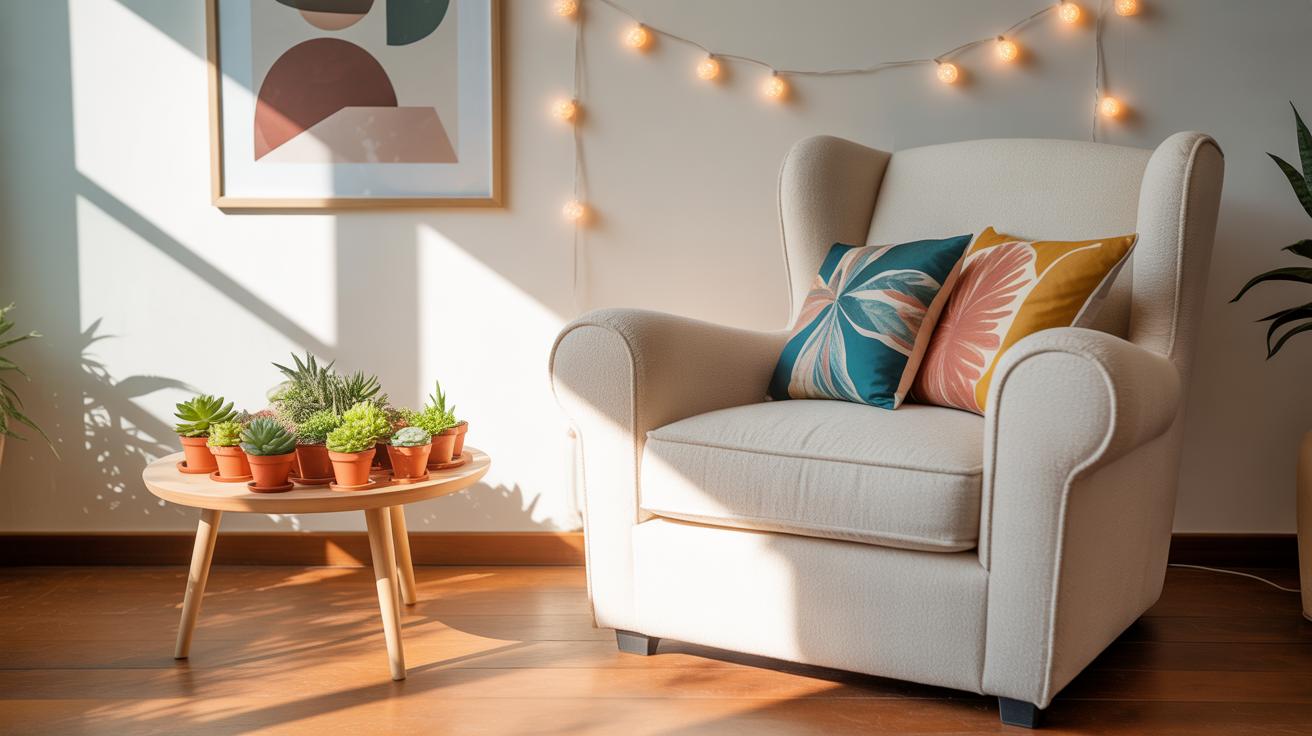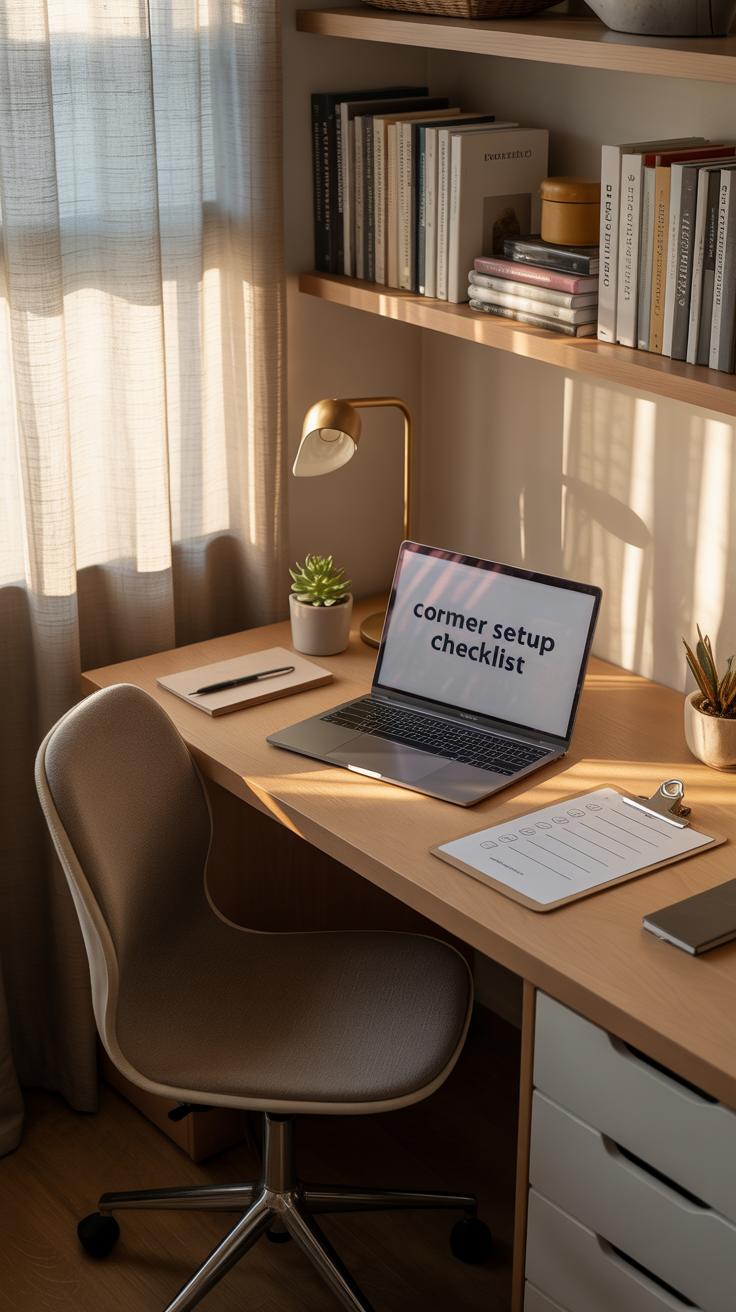Introduction
Making the most of a small bedroom can be a challenge, especially when finding space for a cozy corner. Bedroom corners often go unused or cluttered, but with the right ideas, you can create a functional and inviting spot.
This article will show you how to add a chair to your bedroom corner, fitting perfectly even in small spaces. You will learn ideas on chair types, decorations, and practical arrangements that make your bedroom corner a comfy retreat.
Assess your bedroom corner space
Before you pick out that cute chair or corner shelf, it’s wise to really look at your bedroom corner and understand what space you have. Sometimes, corners are tricky—they might seem small, but they can open up possibilities if you size them up right. A quick measurement can save you from buying something that just won’t fit or looks awkward.
Start by measuring the distance along each wall that meets at the corner. Don’t forget to check from floor to ceiling if you’re thinking about tall furniture. Grab a tape measure—you can use a laser measure if you want, but a tape is fine for most rooms. Jot down the length of both walls, the height, and if there’s any molding or baseboard that sticks out.
Next, consider the shape. Not all corners are the same. You’ll find:
- L-shaped corners—the most common type, where two walls meet at a 90-degree angle.
- Square corners—more like L-shaped but with a wider area, which might allow larger pieces.
- Angled corners—sometimes, walls meet at odd angles, 45 degrees or so, and these can throw off where a chair sits.
Each shape comes with its own puzzle. For instance, an angled corner might mean a regular chair won’t sit flush against both walls, leaving awkward gaps. L-shaped corners might feel restricted if the walls are short. So, size, shape, and quirks of the corner are all key. Take notes, maybe even snap a picture—it helps when you’re shopping or planning the layout.
Types of chairs for small corners
Compact chair styles to consider
When fitting a chair into a small bedroom corner, size really matters. Some chairs feel bulky even if their measurements say otherwise, so look for pieces designed for tight spaces. Slipper chairs are a popular choice — low to the ground, armless, and usually narrow. They fit snugly without crowding the space, though they might lack back support if you want something for longer sitting sessions.
Folding chairs are another option, especially if you don’t need the chair all the time. They can disappear when you need the floor space. Corner chairs, with their triangular or L-shaped designs, can slot neatly into the corner itself. Their odd shape might seem limiting, but they offer surprising seating surface without wasting space.
How to pick a chair for your needs
Choosing a chair isn’t just about looks. Think about chair height relative to your bed or desk—some chairs sit too low or too high, which feels awkward after a while. Cushion comfort counts, more than you might expect. A chair can look perfect but feel stiff or unwelcoming, especially if you want to sit there for reading or just relaxing. It’s also worth pondering what you’ll use it for: occasional seating, a place to put clothes, or a permanent reading nook?
If your bedroom is a multi-use spot, a chair with some storage might surprise you. Some small chairs offer built-in compartments or pockets. You might think a chair is just furniture, but a smart choice can serve several purposes. And of course, the chair’s style should echo your room’s vibe—but don’t sweat it too much; comfort often trumps perfect matching.
Color and material choices
Choosing the right color and material for a bedroom corner chair can feel tricky, especially in a small space. You want something that fits the room’s vibe without overwhelming it. Lighter colors—like soft creams, pale blues, or gentle grays—have this neat effect of making corners feel more open. They tend to reflect whatever natural light comes in, which can make the whole room feel airier and less cramped. But that doesn’t mean bold colors don’t belong. A deep navy or even a rich mustard can bring personality and make your corner a focal point, though it might feel heavier.
When it comes to materials, think about what matters most to you. Fabric chairs often feel cozier and warmer but can demand more upkeep—especially if you’re prone to spills or pets. Leather has this clean, sleek look and is easier to wipe down, but it might not be the most comfortable in warmer months, and it can age visibly. Synthetic materials sometimes strike a compromise; they can mimic leather or fabric, often resist stains well, but might lack that authentic comfort or feel plasticky in some cases.
What’s your balance? Comfort versus durability? Personality versus space? Trying to make a corner feel inviting but not visually heavy? If you’re unsure, maybe test something small first—a chair cushion or fabric sample near the corner—before committing. It’s surprising how color and texture together can change your perception of a space.
Add functional storage solutions
Bedroom corners can quickly become clutter magnets if you don’t plan storage carefully, especially in small spaces. But there’s a way to keep that cozy vibe without sacrificing order. One approach is to pick side tables designed with storage in mind. Think about narrow shelves or little drawers that fit snugly beside your reading chair. They’re perfect for stacking a few books, charging your phone, or setting down a lamp, without taking up too much room.
You might wonder if a bulky piece will squash the corner, but small-scale furniture with hidden compartments changes that idea. Storage ottomans, for example, serve two purposes: a comfortable seat and a place to stash away blankets or small items. Placing one in a corner next to a chair creates a mini hub where you can both sit and keep clutter at bay.
Sometimes, these pieces feel almost like a quiet helper in the room—always there but never overpowering the space. Finding the right size and style may take a bit of trial and error. But investing in multipurpose furniture can make your small bedroom corners feel more intentional and less like afterthoughts. Have you thought about what you might keep tucked away in a storage ottoman? It’s quietly practical, even if you don’t use all the space immediately.
Lighting options for corner comfort
Lighting a bedroom corner with a chair in a small room can be a bit tricky. You want enough light for reading or relaxing but without overwhelming the space. One thing I found helpful is to think in layers—combine different light sources instead of relying on a single lamp. For instance, a slim floor lamp next to your chair saves space and offers direct light without crowding the corner.
Wall sconces are another smart idea. They mount right on the wall and leave the floor clear. Plus, they can be angled toward your seat. If wiring feels like a hassle, there are battery-operated options that avoid the need for outlets nearby. I was surprised by how much difference just a simple wall sconce made in brightening up a tight corner.
Table lamps do work but only if you fit a small side table beside the chair—something compact and not too bulky. A lamp with adjustable brightness is nice, so you can soften the glow when you want calm or turn it up for tasks.
Try placing your chair near a window if you can. Natural light brings a freshness to corners that artificial light sometimes can’t match. I like to keep curtains light and sheer, so sunlight filters through without glare. It means during the day, the corner feels airy and inviting. This can lessen your dependency on electrical lamps, which is neat for saving energy and all that.
Have you ever thought about how shadows play a role? Positioning your light thoughtfully avoids casting dull shadows across your book or face. Sometimes a small reflector lamp or an adjustable arm lamp can fix awkward light patterns. It’s one of those subtle things that makes the corner more comfortable, though you might only realize it after spending time there.
Decorate with practical accessories
When you add a chair to a small bedroom corner, cushions and throws can make all the difference, both for comfort and style. Think about cushions that are just the right size—not too big to overwhelm the chair, but not so small they feel lost. Usually, a set of two or three varying sizes works well. Soft fabrics like cotton or linen offer a light, breathable feel, while velvet or wool can bring a bit more texture and warmth, especially in cooler months.
Color choices are tricky but crucial. If your chair is a bold color or pattern, neutral or muted cushions soften the look without clashing. On the other hand, if the chair is plain, adding cushions with subtle patterns or complementary hues can bring a gentle pop to the corner.
Throws aren’t just for draping. Folding a cozy throw over the armrest or backrest invites you to use the space more often. Try lightweight throws for a relaxed vibe or thicker knits when you want extra warmth. Remember, the size of the throw should fit the chair, or else it’ll look awkward.
Rugs can ground your bedroom corner, especially if you’ve carved out a mini lounge area. In small spaces, a rug that’s about 2×3 feet usually fits nicely. Shapes like rectangles or soft ovals tend to suit corners better—round ones can sometimes feel a bit awkward unless they’re really small. If the corner’s right up against two walls, a smaller rug that tucks underneath the chair just enough to highlight the seating area works best.
Colors and patterns in rugs should complement the existing floor and room scheme. For example, if your floor is dark wood, lighter rugs can brighten the corner. If you already have patterned bedding or curtains, pick a simpler rug. But then again, mixing patterns isn’t always wrong—sometimes it makes the spot feel more personal, even if a bit unpredictable.
Do you ever find yourself hesitating about whether to keep accessories minimal or go all out? It’s a fine line. But remember, with small corners, less can be more—too many accessories make it feel cluttered rather than cozy.
Create a cozy reading nook
If you have a small bedroom corner, turning it into a reading nook with a chair can be a really rewarding project. Begin by choosing a chair that’s not too bulky—something with a soft cushion but slim enough to fit snugly without crowding the space. I think a chair with a gentle incline or a slight recline does wonders for comfort when you’re settling in with a book.
Next, think about where you’ll place your light source. A floor lamp with adjustable brightness or a wall-mounted lamp can bring the warm, focused light you need without taking up much room. Natural light is great, but it’s not always reliable, especially in bedrooms that don’t face the sun. So having that soft, dedicated lamp nearby matters.
Select bookshelves or holders
Now, about storing your reading materials—there are clever little solutions here. Small bookshelves that fit the length of the corner, slim wall-mounted racks, or even baskets placed next to the chair can hold your current reads without feeling overwhelming. Baskets can add a casual, lived-in vibe and keep things tidy without demanding wall space.
Wall-mounted racks can be positioned right above or beside your chair for easy reach. If you’re a bit indecisive like me, a combination of both—maybe a low shelf plus a basket—lets you switch things up whenever you want. The goal is convenience, so you don’t have to leave your nook every time to grab another book.
Tips for adding comfort and warmth
Finally, comforts like a soft blanket or a small footrest can change your nook entirely. If you pause to think, isn’t the perfect reading spot sometimes less about the chair and more about the little details? Having a throw within reach lets you adjust the temperature without leaving your seat.
Footrests don’t need to be fancy; even a pouf or a cushioned box works well. The lighting should never be harsh—soft, warm bulbs help prevent eye strain and enhance the cozy feeling. I’ve found that a dimmer switch or lamps with adjustable glow can really set the mood depending on the time of day.
So, when you design your nook, think beyond that single chair and consider how these small touches can build a space you want to return to. Sometimes, it’s the tiny, thoughtful details that make a corner feel just right.
Compare builtin vs freestanding furniture
You might find yourself torn between built-in corner furniture and freestanding pieces when arranging a small bedroom. Built-ins fit the space exactly, making use of every inch without wasting room. That kind of tailor-made design often means drawers or shelves tucked into awkward spots where freestanding furniture wouldn’t fit at all. It’s like the corner gets a purpose it wouldn’t have otherwise. But then, there’s the cost. Custom built-ins aren’t cheap, and the project can stretch over weeks or months, which might feel like too much hassle for some.
On the flip side, freestanding chairs and tables bring a level of flexibility that’s hard to beat. You can move them around based on how you feel or even switch them out as seasons or needs change. For anyone renting or on a budget, this is a big plus. They’re easier to pick up secondhand or find affordable versions at the store. Yet, they rarely take full advantage of tricky corners, sometimes leaving gaps or awkward spaces that might bother you more than you expect once everything’s in place.
Here are a few thoughts to keep in mind:
- Built-in furniture saves space in a precise way but can tie you down.
- Freestanding pieces cost less and offer freedom but might not fit corners perfectly.
- Think about how often you rearrange or if you might move soon—flexibility matters.
- Sometimes mixing both approaches makes sense; a built-in desk with a freestanding chair, for example.
It’s not always clear-cut, and your choice might depend on what feels right for your lifestyle. Would a fixed, permanent setup feel like a relief? Or would it seem too restrictive after a while? These are questions worth asking yourself before deciding on corner furniture for your small bedroom.
Prevent common space mistakes
Placing a chair in a small bedroom corner can feel like a simple task, but it’s surprisingly easy to make mistakes that throw off the entire room. One of the most frequent errors is crowding the corner with a bulky chair that leaves little to no space for movement. You want to avoid blocking pathways or doors, because that can quickly turn the room into a cramped chaos rather than a cozy nook.
Think about how people move through your room. If the chair sticks out too far or sits right next to a door, it can interrupt the flow. It’s better to pick a chair with a smaller footprint or one that tucks neatly into the corner without pushing into the walking area. Sometimes, rotating the chair slightly or opting for a chair without arms helps save precious inches.
Another thing I’ve noticed is how easy it is to let clutter gather around these small corners. A chair tucked into a pile of clothes, books, or tangled cords quickly loses its appeal. Keeping the corner tidy makes it feel inviting. Use a slim side table or a small basket for essentials, so things have a place without overwhelming the spot. Less really is more here, though it can be tempting to stash everything near a chair where you sit.
So, before you commit to a corner setup, ask yourself: does this placement keep the room easy to move in? Does it make the corner a pleasant, usable space? If the answer nudges “no” even slightly, try shifting the chair or simplifying what’s around it. It might feel like these details don’t matter, but in a tight room, they often make a big difference.
Stepbystep corner setup checklist
First, start by measuring your chosen corner carefully. Grab a tape measure and note the wall lengths and the distance from floor to any nearby features like windows or radiators. This will help you pick furniture that fits comfortably without crowding the space. Don’t forget to check how much walking room you’ll have once the chair is in place—it can get tight in small bedrooms.
Next, think about the chair dimensions. A bulky armchair might overwhelm the area, so look for compact or armless designs. Sometimes, a small accent chair or even a cozy pouf works better than a traditional chair. Measure the chair’s footprint and compare it to your corner measurements to make sure it fits well.
Once you have your chair, consider where to place it. Try positioning it diagonally to soften the corner or flush against one wall for a tidier look. Add a small side table if space allows—something slim to hold a book or a cup. For lighting, a floor lamp or wall-mounted fixture can really change the vibe. If wiring is tricky, battery-powered options might be a good compromise.
Finally, add personal touches to make the spot inviting. A throw blanket or a cushion can bring texture and comfort. If you have room above, try a small piece of wall art or a hanging planter to give the corner some character. Remember, this setup isn’t just about looks—it should be a place you actually want to sit down in, maybe for reading or quiet moments.
Conclusions
A bedroom corner in a small bedroom can be transformed into a useful and attractive space. Choosing the right chair and placing it smartly can add comfort and style without crowding your room.
Use the ideas here to pick the best chair and arrange your corner simply. This will create a special spot for reading or relaxing. With planning and the tips given, your small bedroom will feel bigger and more inviting.

